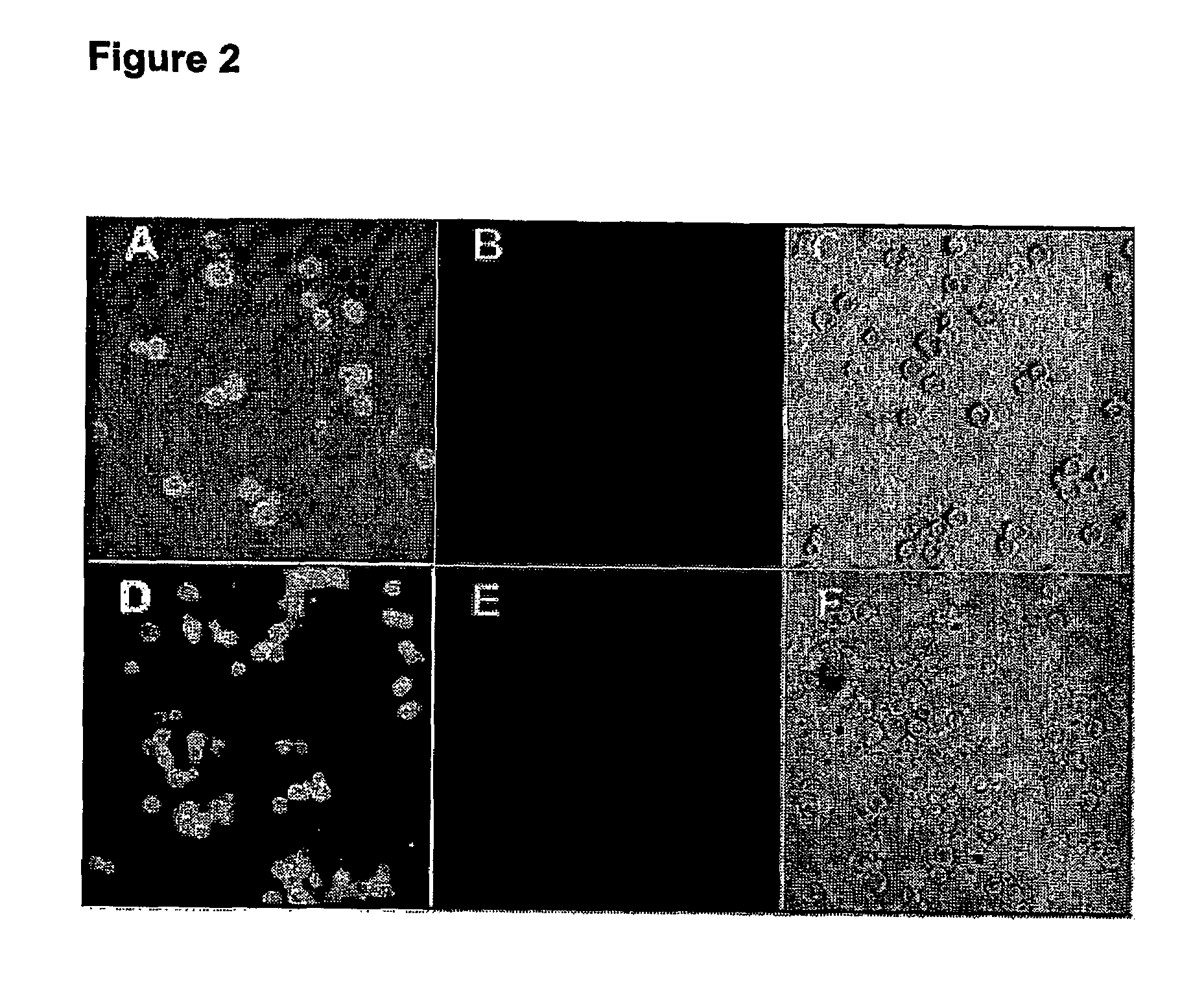Methods for protein labeling based on acyl carrier protein
a technology of acyl carrier protein and protein, applied in the field of protein labeling based on acyl carrier protein, can solve the problems of limited ability to characterize the corresponding proteins in vivo and in vitro, and all these techniques have various limitations or disadvantages
- Summary
- Abstract
- Description
- Claims
- Application Information
AI Technical Summary
Benefits of technology
Problems solved by technology
Method used
Image
Examples
examples
[0103]The following examples and experimental procedures are set forth so as to provide those of ordinary skill in the art with a complete disclosure and description of how to practice the invention, and are not intended to limit the scope of the invention.
[0104]Synthesis of CoA-Bt
[0105]To a solution of biotin-maleimide 1 (1 mg, 0.0022 mmol) in 100 μl DMF, a solution of coenzyme A disodium salt (1.79 mg, 0.0022 mmol, 1 eq.) in 90 μl DMF and 10 μl 50 mM Tris-Cl pH 7.5 is added. The mixture is stirred for 4 hours at room temperature. It is then diluted with CH3CN / H2O 1:4, and aliquots of 500 μl are injected on a preparative HPLC column: Gradient (A=H2O 99%, CH3CN 1%, 50 mM NH4OAc / B=CH3CN) from A / B 95:5 to A / B 80:20 in 2 min, to A / B 68:32 in 7 min, to A / B 20:80 in 2 min, then back to A / B 95:5. The retention time of the CoA-biotin is 6.5 min. Fractions containing the desired product are concentrated in vacuo, dissolved in DMSO, and an analytical amount injected to control the purity. Th...
PUM
| Property | Measurement | Unit |
|---|---|---|
| molecular weight | aaaaa | aaaaa |
| pH | aaaaa | aaaaa |
| retention time | aaaaa | aaaaa |
Abstract
Description
Claims
Application Information
 Login to View More
Login to View More - R&D
- Intellectual Property
- Life Sciences
- Materials
- Tech Scout
- Unparalleled Data Quality
- Higher Quality Content
- 60% Fewer Hallucinations
Browse by: Latest US Patents, China's latest patents, Technical Efficacy Thesaurus, Application Domain, Technology Topic, Popular Technical Reports.
© 2025 PatSnap. All rights reserved.Legal|Privacy policy|Modern Slavery Act Transparency Statement|Sitemap|About US| Contact US: help@patsnap.com



